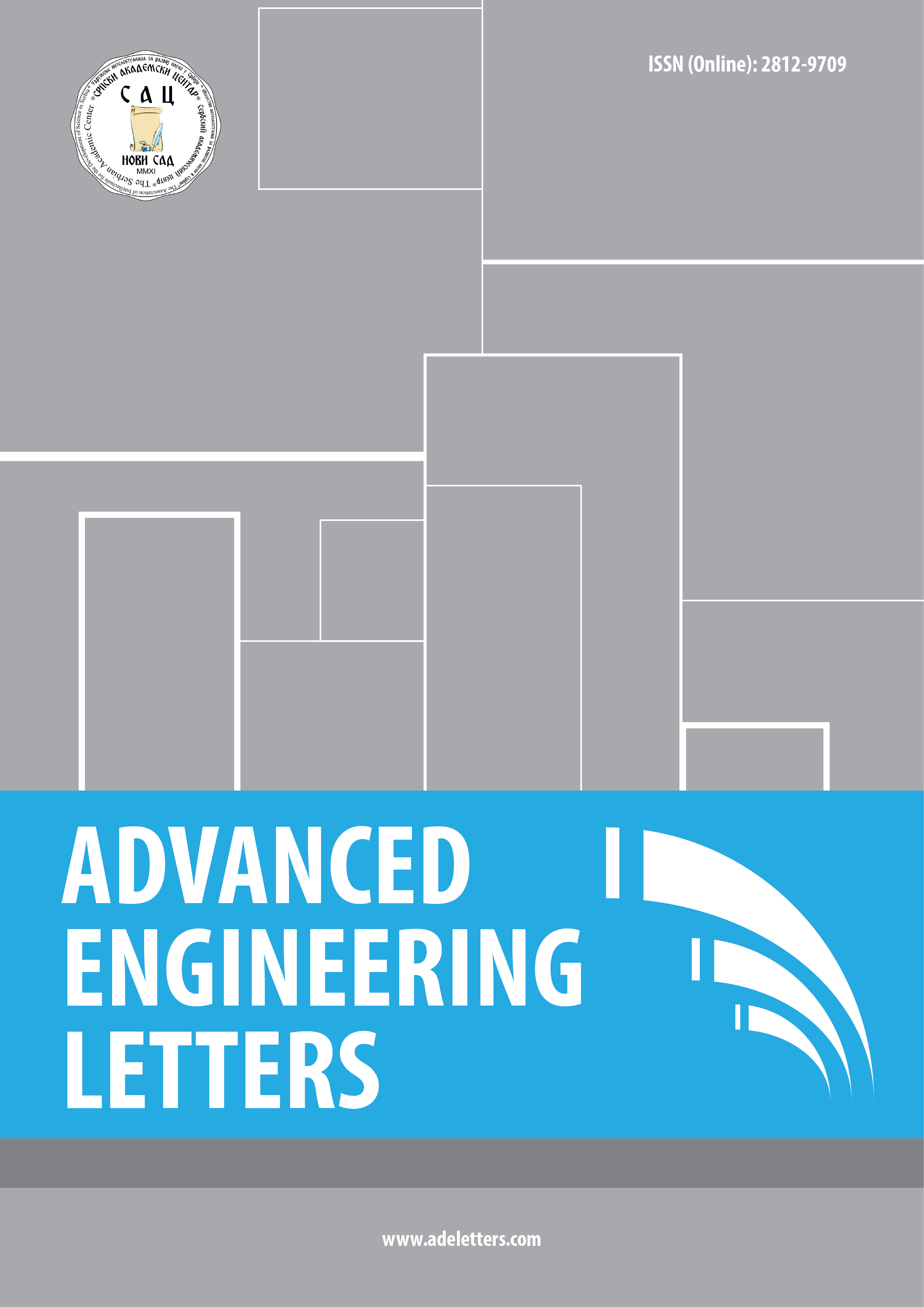ISSN (Online): 2812-9709
Vol.2, No.2, 2023: pp.64-70
AUSTENITIC STAINLESS STEEL AND MARTENSITIC TRANSFORMATION IN WELDED HIGH-HARDNESS ARMOR STEEL
Authors:
, Miloš Jovanović2
1The Higher Education Technical School of Professional Studies, Novi Sad, Serbia
2Welding Institute, Ljubljana, Slovenia
Received: 26 December 2022
Revised: 5 April 2023
Accepted: 17 May 2023
Published: 30 June 2023
Abstract:
An austenitic filler material is traditionally used for welding armor steels, thus avoiding the negative effect of hydrogen content due to slow diffusion towards the sensitive fusion line. For heavy structural engineering such as armored military vehicles, which are frequently affected by impact and dynamic load, it is crucial to know the dynamic properties of the most sensitive area of welded joints, the weld metal zone. Due to a significant interest in quantifying material resistance to crack initiation and propagation, the fatigue crack growth rate was measured in the welded metal zone, while the resistance to crack growth in the weld metal was tested by the amount of austenite transformed into martensite. Accordingly, the threshold stress concentration factor was 10 MPa m1/2. XRD spectral analysis revealed a direct transformation of γ – austenite into α’ – martensite.
Keywords:
Armor steel, fatigue crack growth, austenitic stainless steel, austenitic filler material, martensitic transformation, welding, armored military vehicles
References:
[1] L. Kuzmikova, J. Norrish, H. Li, M Callaghan, Research to establish a systematic approach to safe welding procedure development using austenitic filler material for fabrication of high strength steel. 16th International Conference on the Joining of Materials, 2011, pp.1-13.
[2] B. Savic, A. Cabrilo, Effect of Heat Input on the Ballistic Performance of Armor Steel Weldments. Materials, 14(13), 2021: 3617. https://doi.org/10.3390/ma14133617
[3] E. Ranjbarnodeh, H. Pouraliakbar, A.H. Kokabi, Finite Element Simulation of Carbide Precipitation in Austenitic Stainless Steel 304. International Journal of Mechanics and Applications, 2(6), 2012: 117-123.
https://doi.org/10.5923/j.mechanics.20120206.03
[4] M.M. Alam, Z. Barsoum, P. Jonsén, A.F.H. Kaplan, H.Å, Häggblad, Influence of defects on fatigue crack propagation in laser hybrid welded eccentric fillet joint. Engineering Fracture Mechanics, 78(10), 2011: 2246-2258.
https://doi.org/10.1016/j.engfracmech.2011.04.011
[5] A. Cabrilo, A. Sedmak, Z. Burzic, S. Perkovic, Fracture mechanics and fatigue crack propagation in armor steel welds. Engineering Failure Analysis, 106, 2019: 104155. https://doi.org/10.1016/j.engfailanal.2019.104155
[6] H. Pouraliakbar, M. Hamedia, A.H. Kokabia, A. Nazari, Designing of CK45 Carbon Steel and AISI 304 Stainless Steel Dissimilar Welds. Materials Research, 17(1), 2014: 106-114.
[7] S. Yu, J. Yan, H. Li, R. Ding, A. Lall, A. Rabiei, P. Bowen, Fatigue crack growth resistance of the austenitic stainless steel Alloy 709 at elevated temperatures. Journal of Materials Research and Technology, 9(6), 2020: 12955-12969.
https://doi.org/10.1016/j.jmrt.2020.09.050
[8] D.F. Martelo, A. Mateo, M.D. Chapetti, Crack closure and fatigue crack growth near threshold of a metastable austenitic stainless steel. International Journal of Fatigue, 77, 2015: 64-77. https://doi.org/10.1016/j.ijfatigue.2015.02.016
[9] M. Moallemi, A. Kermanpur, A. Najafizadeh, A. Rezaee, S.H. Baghbadorani, D.P. Nezhadfar, Deformation-induced martensitic transformation in a 201 austenitic steel: The synergy of stacking fault energy and chemical driving force. Materials Science and Engineering: A, 653, 2016: 147-152. https://doi.org/10.1016/j.msea.2015.12.006
[10] S. Allain, J.P. Chateau, O. Bouaziz, S. Migot, N. Guelton, Correlations between the calculated stacking fault energy and the plasticity mechanisms in Fe–Mn–C alloys. Materials Science and Engineering: A, 387-389, 2004: 158-162.
https://doi.org/10.1016/j.msea.2004.01.059
[11] E. Polatidis, W.-N. Hsu, M. Šmíd, T. Panzner, S. Chakrabarty, P. Pant, H. Van Swygenhoven, Suppressed martensitic transformation under biaxial loading in low stacking fault energy metastable austenitic steels. Scripta Materialia, 147, 2018: 27-32. https://doi.org/10.1016/j.scriptamat.2017.12.026
[12] Z. Mei, J.W. Morris, Influence of deformation- induced martensite on fatigue crack propagation in 304-type steels. Metallurgical Transactions A, 21, 1990: 3137-3152. https://doi.org/10.1007/BF02647310
[13] A. Cabrilo, K. Geric, Weldability of High hardness armour steel. Advanced Materials Research, 1138, 2016, 79-84. https://doi.org/10.4028/www.scientific.net/AMR.1138.79
[14] A.H. Monazzah, H. Pouraliakbar, R. Bagheri, S.M.S. Reihani, Toughness behavior in roll- bonded laminates based on AA6061/SiCp composites. Materials Science and Engineering: A, 598, 2014: 162-173.
https://doi.org/10.1016/j.msea.2014.01.014
[15] ASTM E647-08: Standard test method for measurement of fatigue crack growth rates. In Annual Book of ASTM Standards. ASM International, West Conshohocken, USA, 2004.
[16] R.L. Snyder, The Use of Reference Intensity Ratios in X-Ray Quantitative Analysis. Powder Diffraction, 7(4), 1992: 186-193. https://doi.org/10.1017/S0885715600018686
[17] J. Lu, L. Hultman, E. Holmström, K.H. Antonsson, M.Grehk, W. Li, L. Vitos, A. Golpayegani, Stacking fault energies in austenitic stainless steels. Acta Materialia, 111, 2016: 39-46. https://doi.org/10.1016/j.actamat.2016.03.042
[18] P. Haušild, V. Davydov, J. Drahokoupil, M. Landa, P. Pilvin, Characterization of strain-induced martensitic transformation in a metastable austenitic stainless steel. Materials & Design, 31(4), 2010: 1821-1827.
https://doi.org/10.1016/j.matdes.2009.11.008
[19] F. Xiong, Y. Liu, Effect of stress-induced martensitic transformation on the crack tip stress-intensity factor in Ni–Mn–Ga shape memory alloy. Acta Materialia, 55(16), 2007:5621-5629. https://doi.org/10.1016/j.actamat.2007.06.031
[20] M. Nakajima, M. Akita, Y. Uematsuc, K. Tokaji, Effect of strain-induced martensitic transformation on fatigue behavior of type 304 stainless steel. Procedia Engineering, 2(1), 2010: 323-330. https://doi.org/10.1016/j.proeng.2010.03.036
[21] M. Grujicic, S.G. Lai, P. Gumbsch, Atomistic simulation study of the effect of martensitic transformation volume change on crack-tip material evolution and fracture toughness. Materials Science and Engineering A, 231(1-2), 1997: 151-162.
https://doi.org/10.1016/S0921-5093(97)00068-3
[22] Y.-B. Shang, H.-J. Shi, Z.-X. Wang, G.-D. Zhang, In-situ SEM study of short fatigue crack propagation behavior in a dissimilar metal welded joint of nuclear power plant. Materials & Design, 88, 2015: 598-609.
http://dx.doi.org/10.1016/j.matdes.2015.08.090
© 2023 by the authors. This work is licensed under a Creative Commons Attribution-NonCommercial 4.0 International License (CC BY-NC 4.0)
![]()
How to Cite
A. Čabrilo, N. Janjić, V. Blanuša, M. Jovanović, Austenitic Stainless Steel and Martensitic Transformation in Welded High-Hardness Armor Steel. Advanced Engineering Letters, 2(2), 2023: 64–70.
https://doi.org/10.46793/adeletters.2023.2.2.4
More Citation Formats
Čabrilo, A., Janjić, N., Blanuša, V., & Jovanović, M. (2023). Austenitic Stainless Steel and Martensitic Transformation in Welded High-Hardness Armor Steel. Advanced Engineering Letters, 2(2), 64–70. https://doi.org/10.46793/adeletters.2023.2.2.4
Čabrilo, Aleksandar, et al. “Austenitic Stainless Steel and Martensitic Transformation in Welded High-Hardness Armor Steel.” Advanced Engineering Letters, vol. 2, no. 2, 2023, pp. 64–70, https://doi.org10.46793/adeletters.2023.2.2.4.
Čabrilo, Aleksandar, Nenad Janjić, Vladimir Blanuša, and Miloš Jovanović, 2023. “Austenitic Stainless Steel and Martensitic Transformation in Welded High-Hardness Armor Steel.” Advanced Engineering Letters 2 (2): 64–70. https://doi.org/10.46793/adeletters.2023.2.2.4.
Čabrilo, A., Janjić, N., Blanuša, V. and Jovanović, M. (2023). Austenitic stainless steel and martensitic transformation in welded high-hardness armor steel. Advanced Engineering Letters, 2(2), pp.64–70. doi: 10.46793/adeletters.2023.2.2.4.






